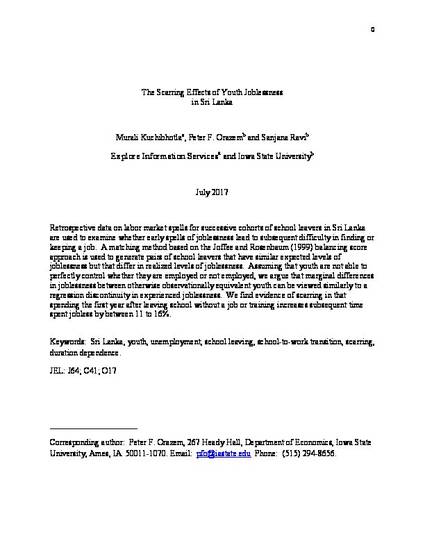
Retrospective data on labor market spells for successive cohorts of youth in the school‐to‐work transition in Sri Lanka are used to examine whether early spells of joblessness lead to subsequent difficulty in finding or keeping a job. A balancing score approach is used to generate pairs of youth in the school‐to‐work transition who have similar expected levels of joblessness but who differ in realized levels of joblessness. Assuming that youth are not able to perfectly control whether they are employed or not employed, we argue that marginal differences in joblessness among otherwise observationally equivalent youth can be viewed similarly to a regression discontinuity in experienced joblessness. We find evidence of scarring in that spending the first year after leaving school without a job or training increases subsequent share of time spent jobless by 23–31 percentage points and lowers subsequent wages by 5.5%–7.5%.
Available at: http://works.bepress.com/peter-orazem/137/

This is a working paper of an article published as Kuchibhotla, Murali, Peter F. Orazem, and Sanjana Ravi. "The scarring effects of youth joblessness in Sri Lanka." Review of Development Economics 24, no. 1 (2020): 269-287. doi: 10.1111/rode.12639. Posted with permission.